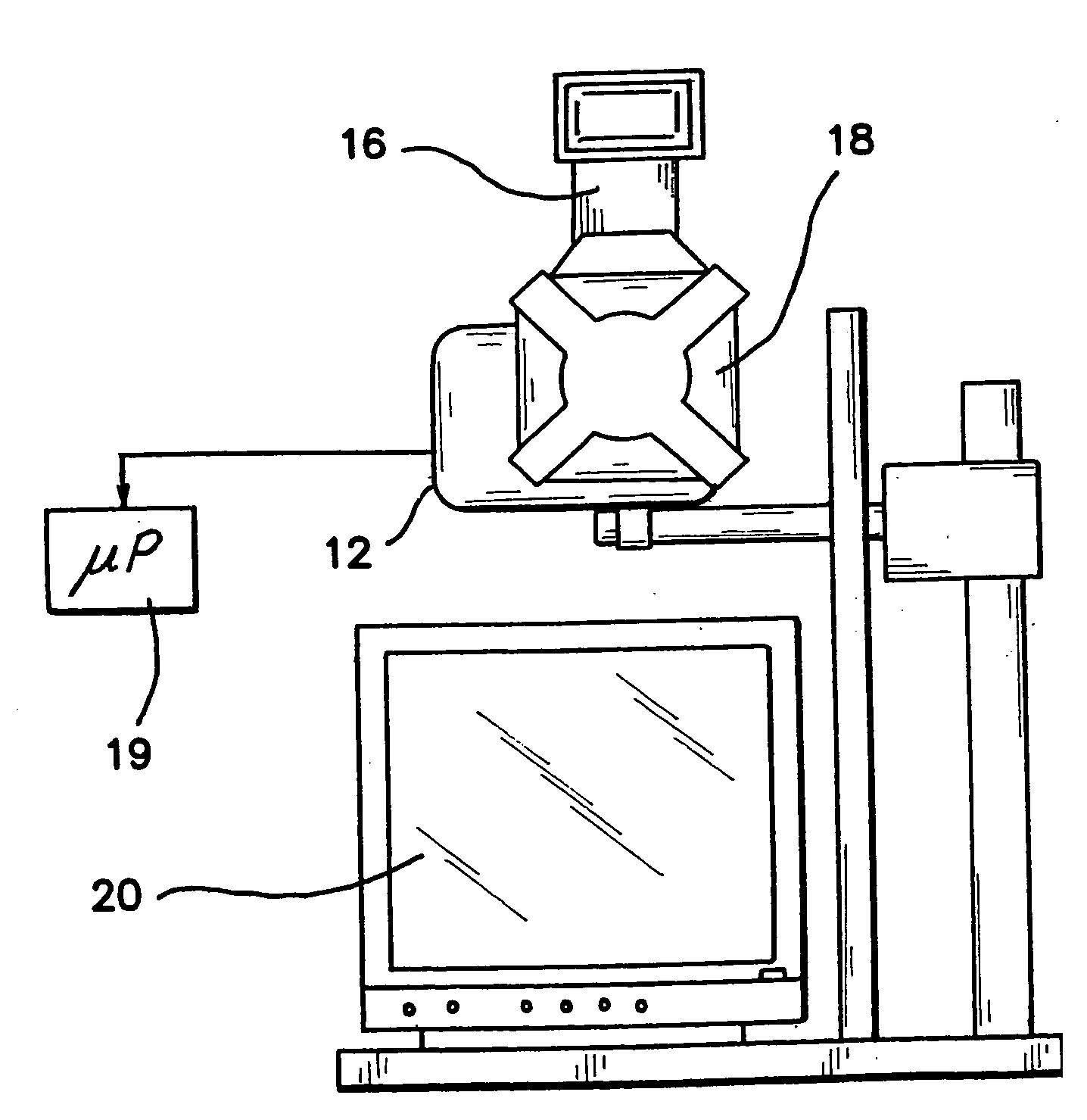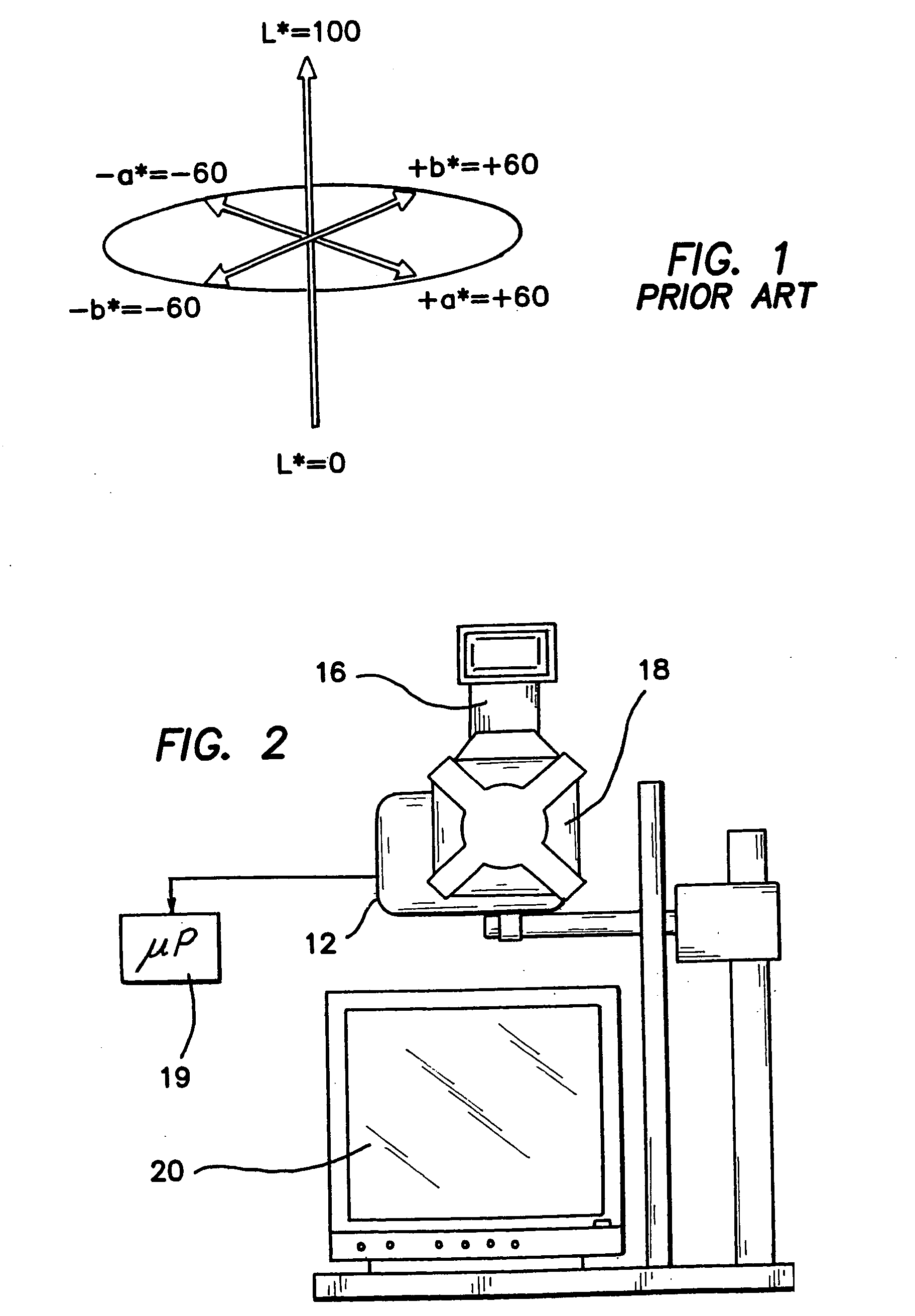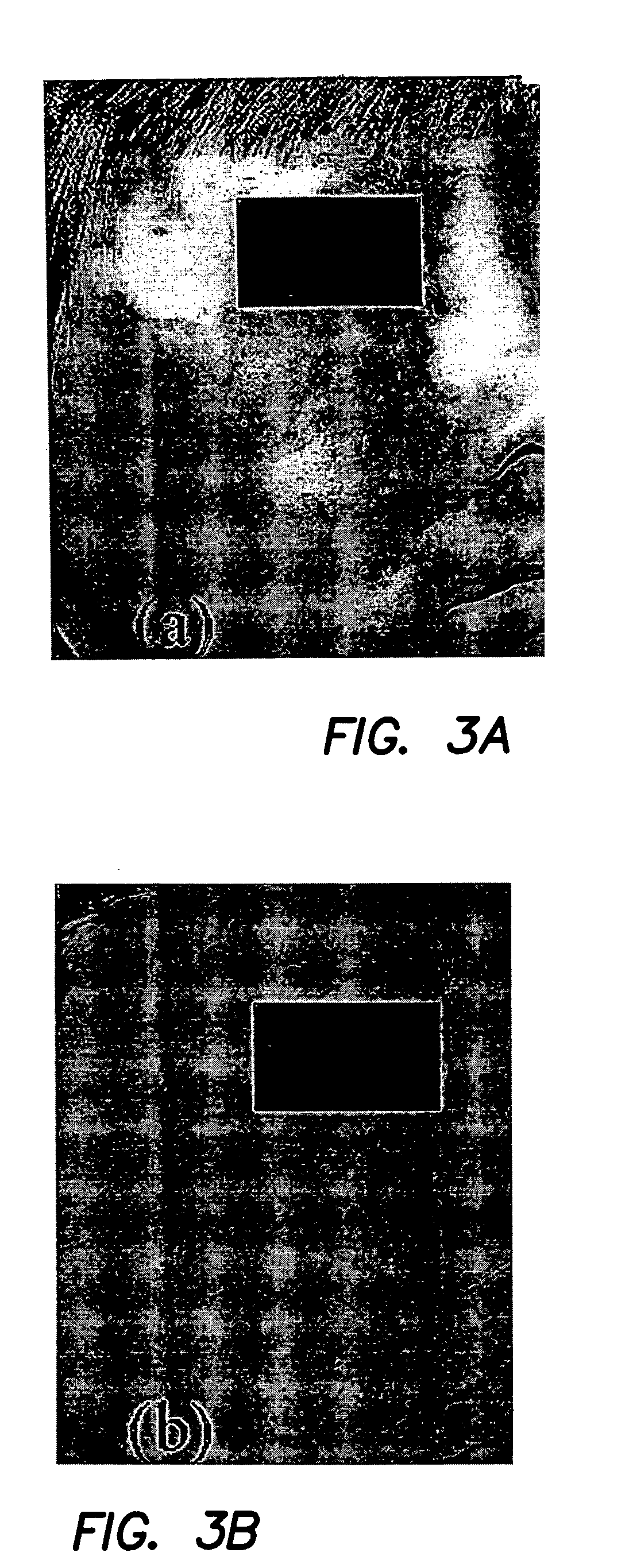Method and apparatus for characterization of chromophore content and distribution in skin using cross-polarized diffuse reflectance imaging
a technology of diffuse reflectance and chromophore, applied in the field of optical imaging of skin, can solve the problems of adverse affecting development, clinical significance of pws, and potentially devastating psychological and physical complications
- Summary
- Abstract
- Description
- Claims
- Application Information
AI Technical Summary
Benefits of technology
Problems solved by technology
Method used
Image
Examples
Embodiment Construction
Numerous factors affect the quality of information contained in each digital image. As an optical system is used to capture data from patients over a period of months to years, it is critical to characterize the sources of variation in the system and determine the sensitivity of the data to expected changes that may occur in the system components over time. The effects of curved surfaces on recovered indices, quality of crossed-polarizer extinction, drift in “color temperature” of the illumination device, errors in white balance, errors in repositioning target tissue and effects of small angular displacements in illumination and collection will impact the data analysis. We have quantified the variance associated with each of these factors and subsequently take steps to control or minimize the impact of those factors. Statistical error propagation analysis is used to determine the overall magnitude of multiple sources of error on CIE L*a*b* values computed from each raw image.
Ther...
PUM
 Login to View More
Login to View More Abstract
Description
Claims
Application Information
 Login to View More
Login to View More - R&D
- Intellectual Property
- Life Sciences
- Materials
- Tech Scout
- Unparalleled Data Quality
- Higher Quality Content
- 60% Fewer Hallucinations
Browse by: Latest US Patents, China's latest patents, Technical Efficacy Thesaurus, Application Domain, Technology Topic, Popular Technical Reports.
© 2025 PatSnap. All rights reserved.Legal|Privacy policy|Modern Slavery Act Transparency Statement|Sitemap|About US| Contact US: help@patsnap.com



